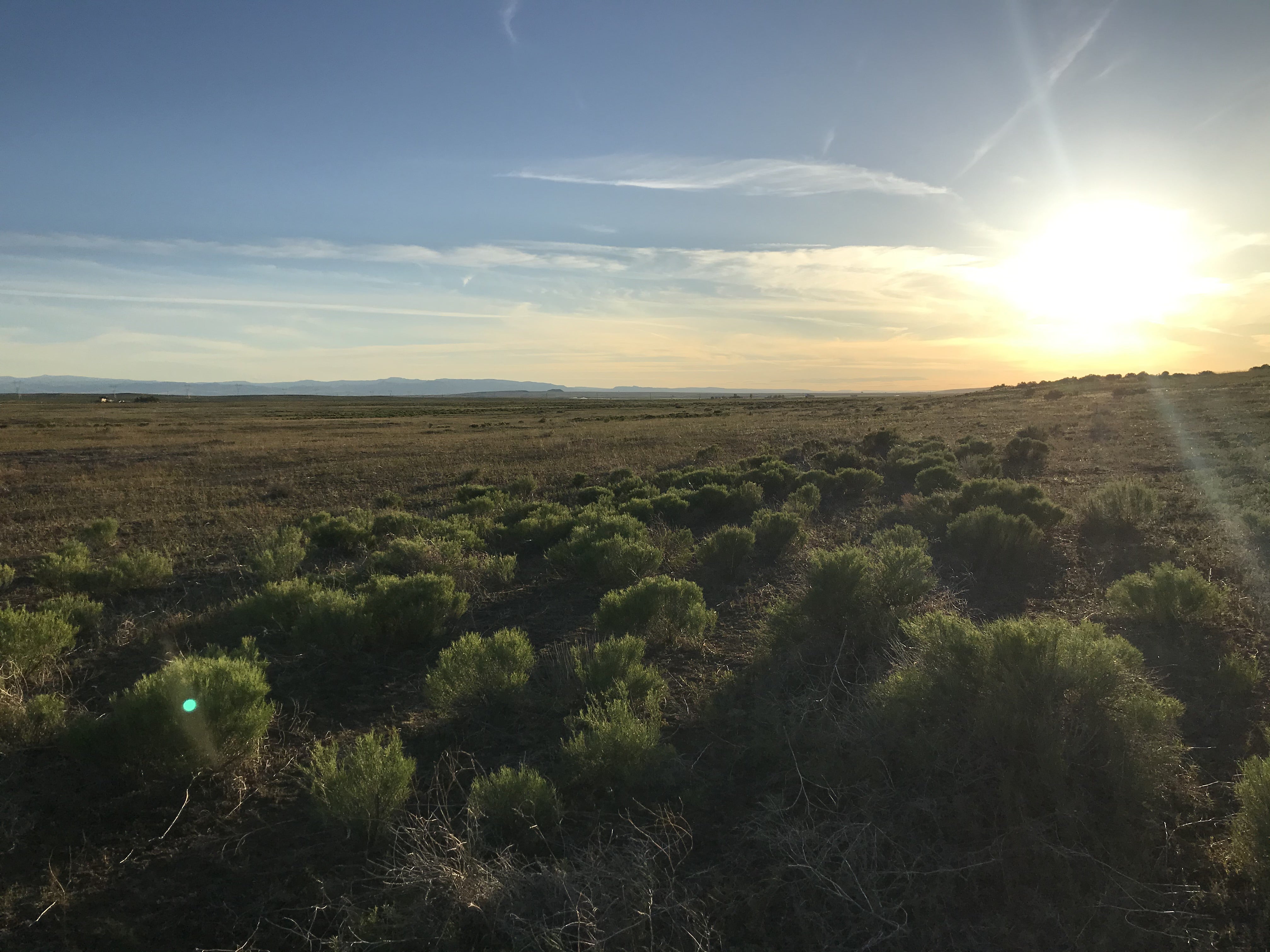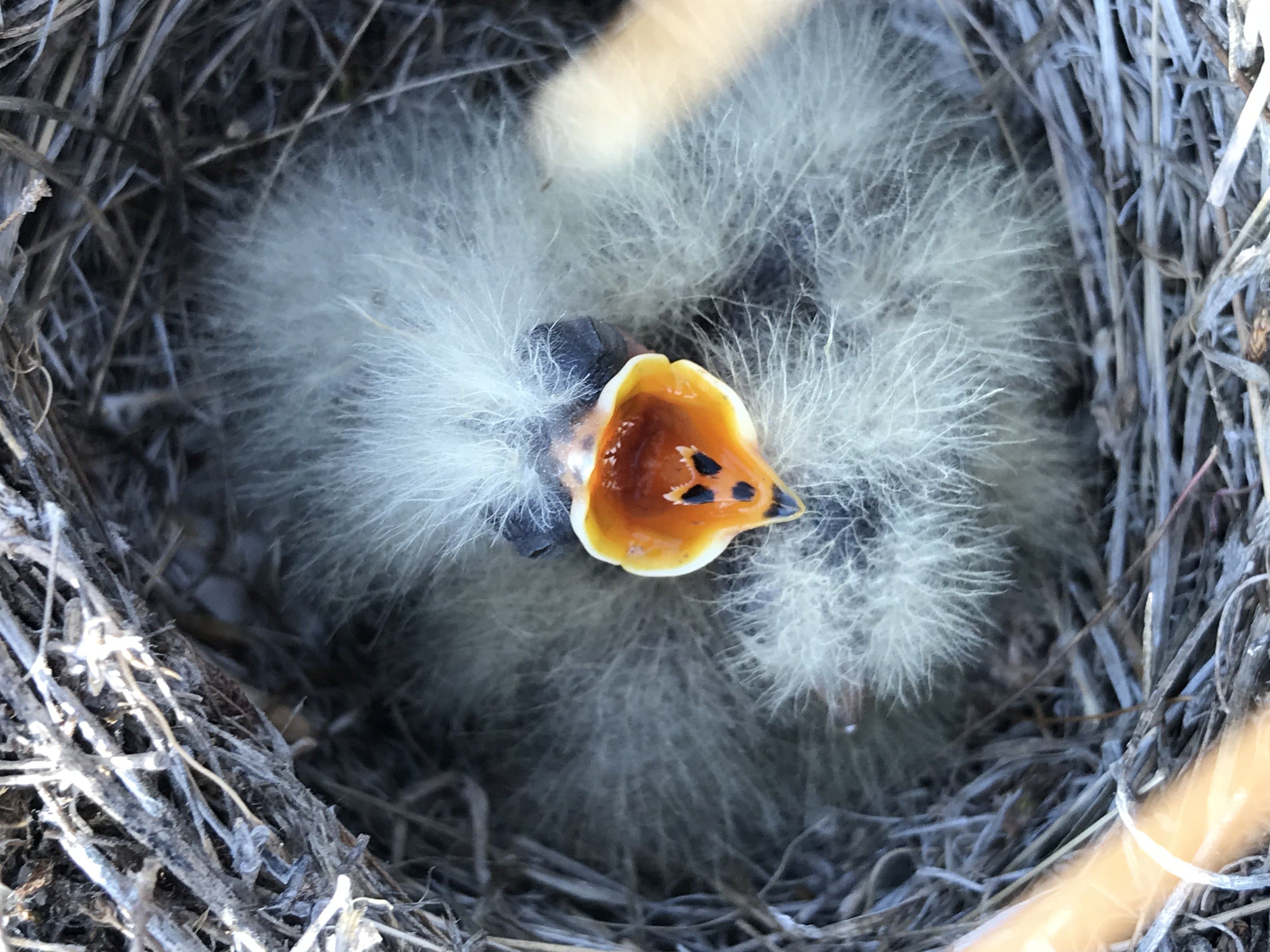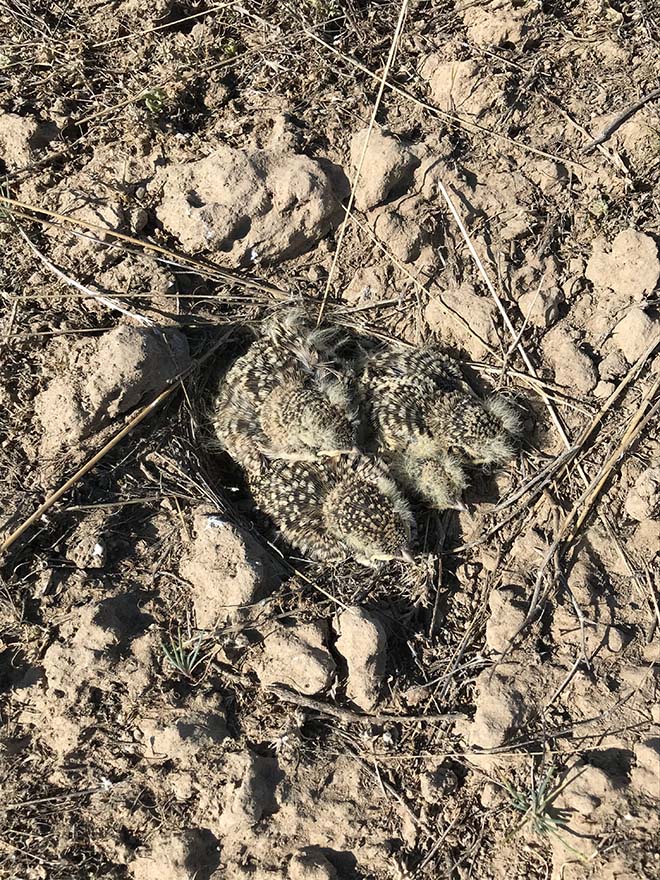By: Madeline Aberg
There’s a good chance you’ve seen a Horned Lark. They have a distinct look with a dark stripe across their face and throat, yellow or white eyebrows, ears, and chin, and, of course, the tufts of feathers that create their “horns.” These birds are widespread – they breed in open habitats across North America – and abundant in many sites. This year, we piloted a new field study of Horned Larks at the Morley Nelson Snake River Birds of Prey National Conservation Area in southwest Idaho, one of the sites where the Intermountain Bird Observatory has been monitoring Long-billed Curlews.

Horned Larks are not considered to be threatened. However, a recent study found that even abundant bird species, including the Horned Lark, have declined dramatically in the past 50 years.
This makes it important to take a closer look at what impacts even the most common species.
Outdoor recreation is one type of human activity that can have a negative impact on birds and other wildlife, especially during the breeding season when birds need to put their energy into finding a mate, producing and incubating eggs, and feeding young instead of avoiding people. Additionally, some recreational activities attract scavengers that are also nest predators.
We’re interested in how outdoor recreation in the sagebrush steppe impacts Horned Lark nesting success, or the percent of nests that have eggs where chicks hatch and survive until they leave the nest (fledge). This summer we monitored Horned Lark nests in areas with high and low recreational use to study these effects. Our new Horned Lark fieldwork also gives us an opportunity to compare the Long-billed Curlew monitoring project to a smaller, more abundant species at the same site.
We’re also getting the chance to learn some basic information about this common species at our study site.
When do Horned Larks start breeding and how long does the breeding season last? What nest sites do they choose? How long are their incubation and nestling periods? Horned Larks breed in a wide range of habitats, so it’s helpful to have information for our population and how it compares to populations breeding in alpine, desert, or grassland environments.

To study the nesting success of Horned Larks, we need to find their nests. Since it was our first season studying Horned Larks, we had to learn what behavioral cues to watch to find a nest. It’s easiest to find the males because they’ll sit on a shrub or other perch and sing. But males don’t help to build a nest or incubate the eggs, so what we really wanted to find was a female gathering nesting material or foraging quickly before heading back to the nest. Once the eggs hatch, both the male and female help feed the new chicks, so we pay close attention to any bird that is carrying an insect.

Once we found a nest, we approached carefully (following standard nest monitoring protocols) and recorded which stage the nest was in (building, incubating, or hatched), the number of eggs or chicks, and the location of the nest. We check on the nest every 2-3 days until the chicks leave the nests. For Horned Larks at our study site, the incubation period lasts around 11 days. The chicks stay in the nest for about 8 days, then leave and walk/hop/flutter across the ground following their parents.

We searched for Horned Lark nests from March to July and found a total of 55 nests, which was exciting for the first field season!
We’re in the process of analyzing the data from this field season and hope to monitor Horned Lark nests again next year. We hope that studying the impacts of human activities on this common species can lead to insights that enable humans and Horned Larks to use this landscape for many years to come.

This article is part of our 2020 end of the year newsletter! View the full newsletter here, or click “older posts” to read the next article.
Make sure you don’t miss out! Sign up to get our annual email update.